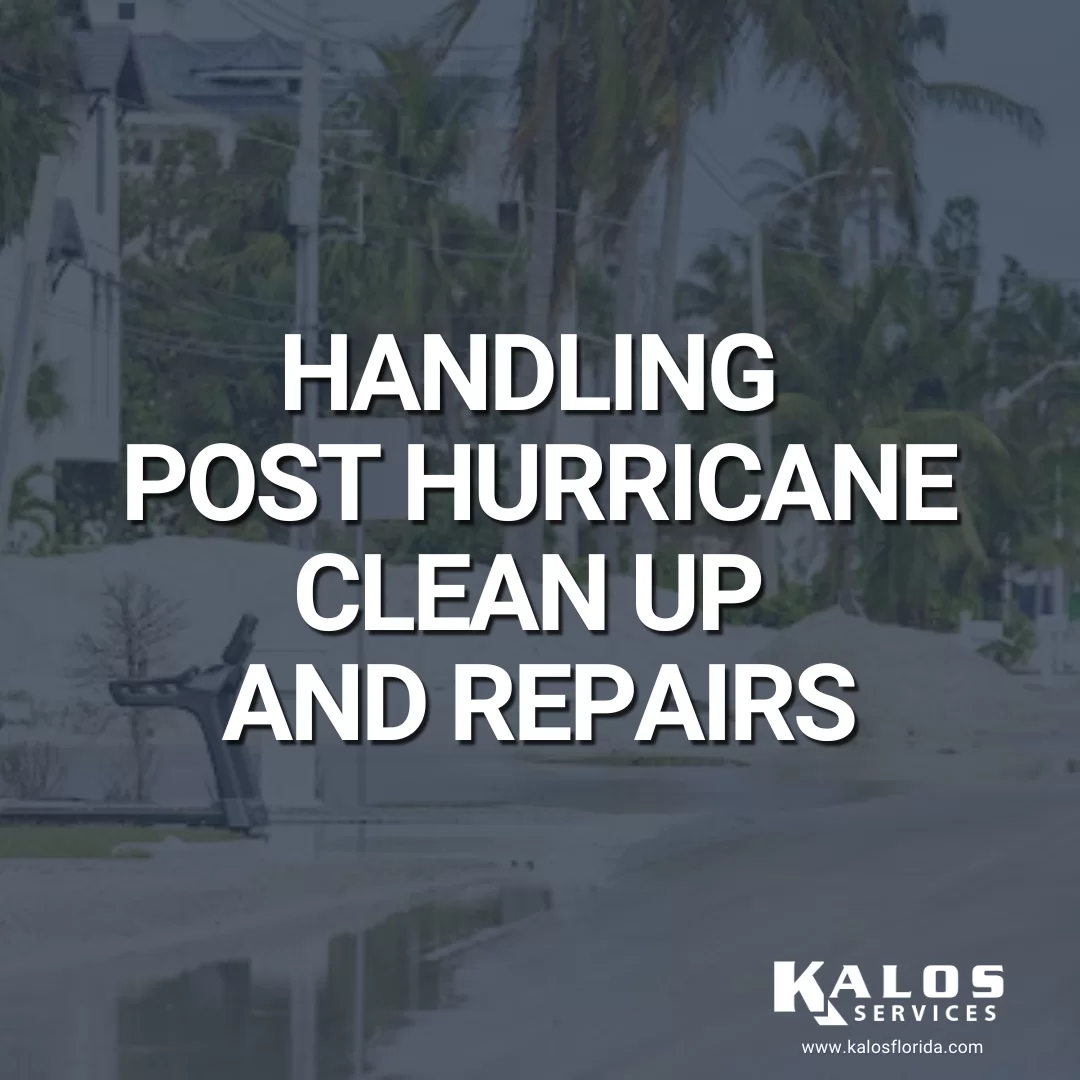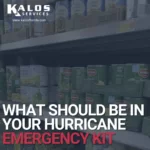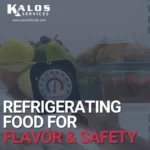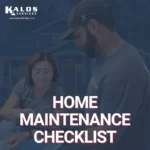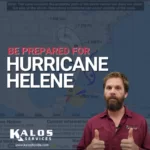Those of us here at Kalos hope your families have remained safe during Hurricane Milton, which brought widespread wind damage and power outages to much of our service area. After we check in on family members and gradually await the power coming back on and the reopening of local businesses, we can start thinking about post-hurricane cleanup and repairs.
The health and safety of your family members is our top priority, so make sure you only do post-hurricane cleanup and repairs if you can do so safely. That said, here is a list of things to think about when doing post-hurricane cleanup and repairs. We will also include a quick bulleted checklist at the bottom.
Put Your Safety First
Your personal safety is a lot more important than your possessions, utilities, and home. For this reason, you should only enter an area if it is safe to do so; floodwater and structural damage can make it unsafe to enter your home or a neighbor’s.
Due to the moisture and damage brought on by hurricanes, it’s a good idea to wear personal protective equipment (PPE) to protect yourself. Long-sleeved shirts, pants, closed-toed shoes (rubber boots are best), and gloves will reduce the chance of injury. If mold and bacteria are present, wearing goggles and a mask will also go a long way.
Do NOT enter a flooded home under any circumstance, and make sure you avoid touching any wet electronic devices.
Survey Your Home and Document Damage
Once you can be sure you’re safe, document damage to your home for insurance purposes. Separate your non-damaged items from your damaged items immediately so that you can have the most accurate idea of what needs to be repaired or replaced.
Be sure to take close-up pictures of damaged fences, roofing, and appliances (with serial numbers, if applicable). You may need to keep these around for the claims inspector, so don’t dispose of them. If possible, gather pictures of these items from when they were undamaged.
Make notes of every item that needs to be repaired or replaced, and save all receipts.
Remove Standing Water and Debris
If you can safely do so, clear out any debris from your yard and home. Again, if you’re handling any sharp objects or organic material, wear PPE like gloves and waterproof, closed-toed shoes.
If you just have standing water in small areas like a patio, you can use a wet/dry vacuum to suck it up. However, if you have standing water throughout your yard, you can contact a landscaper for the best possible solution.
Pick up any tree branches, palm fronds, roof shingles, and wood from damaged fences. Make sure you wear gloves, as the wood and plant material may cause cuts or splinters. You may also need to rake the yard if nearby trees have blown a lot of leaves into your yard. Arrange to have any loose branches on your property cut down, whether you call in a professional or do it yourself.
Make Arrangements for Repairs
Once you have documented the damage and separated your damaged and undamaged items, you may begin making minor or temporary repairs only if it is safe to do so and you have the technical expertise to make those repairs.
If you have damage to utility lines, parts of your home, or appliances you can’t repair, call the appropriate professionals. You will want to call a plumber for anything related to piping, including your water heater, softeners, and gas or water pipes. Call an electrician for electrical problems, and you can call an HVAC contractor for damage to your HVAC system. There are many other local contractors that offer services like fence, gutter, and roof repairs.
Again, save any receipts you receive from professionals you’ve hired to make repairs.
After any hurricane, we just want to return to normalcy, and these are some steps to take to get a few steps closer to it. However, your safety is more important than getting everything back to normal, so make sure you ONLY do the things on this list if it is safe to do so. Post-storm injuries are common, and the cleanup and repairs aren’t worth a possible injury.
If you’re looking for a residential HVAC contractor or plumber in Central Florida, Kalos has your back. You can call or text us at (352)-243-7099 anytime, and we’ll send someone out as soon as possible.
Post-Hurricane Cleanup and Repair Checklist
REMEMBER: Only do these items if it is safe to do so!
- Acquire and wear personal protective equipment, including gloves and boots
- Evaluate your home’s electrical and plumbing systems
- Separate damaged items from non-damaged items
- Take photos of damaged items and write down serial numbers, if applicable
- Maintain a list of items that need repair and have been repaired
- File insurance claims for damaged items
- Remove small amounts of standing water with a shop vac
- Remove debris from inside and outside your home
- Make temporary repairs if you have the technical skill to do so
- Call contractors to handle emergency repairs
- Save any and all receipts for repair services or replacement items

